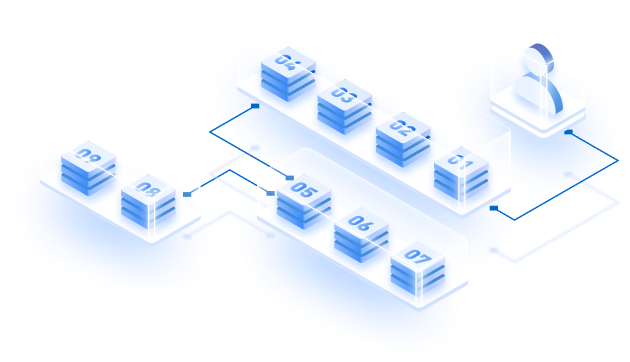If you’re launching an app, you pick a chain. If you’re launching a network, you launch your own chain, and in 2025, more and more teams are doing exactly that.
According to Matt Schmenk from Ava Labs:
“Hundreds of L1s are launching on Avalanche next year.”
And it’s already happening across gaming, RWAs, infra, DePIN, and all other leading verticals. But the reason founders are choosing Avalanche goes deeper than cost or throughput. To Launch L1s on Avalanche means gaining access to a tech stack designed for full-chain sovereignty — from validator logic to token routing.
Avalanche gives you infrastructure that’s purpose-built for sovereign L1s — with Avalanche9000, native Interchain Messaging, and Interchain Token Transfers (ICTT) baked in from the start.
That means full control over your validator set. Native cross-chain sync. And seamless token movement is secured by your own chain’s security.
According to Snowpeer, Avalanche already powers 789 L1s on the Fuji testnet, 64 mainnet L1s, and secures over $1.67B in total value.
If you’re looking to Launch L1s on Avalanche, this is the year to do it — with infra that’s production-ready and already powering networks across every vertical.

A Recap: What are Avalanche L1s and Where Do We Stand Today?
Blockchain scaling has always sparked intense debate. Modular versus monolithic architectures have been at the center. Modular scaling relies on rollups and external data availability layers connected to a settlement layer. Whereas, monolithic chains aim to handle execution, consensus, and data storage within a single high-performance environment.
Both have their own set of merits as well as demerits. Avalanche L1s stands out by offering the best of both worlds through its support for independent Layer1s, previously known as Subnets.
Unlike rollups or shared L2s, these are fully sovereign Layer1s: Where you can define your own validator set, tokenomics, execution logic, compliance rules, and still inherit Avalanche’s high-speed, low-latency foundation.
No other platform makes it this simple to Launch L1s on Avalanche-scale performance without giving up sovereignty.
Each Avalanche L1 runs in isolation, so usage spikes on one chain don’t clog up another. That’s a huge win for apps that demand consistent performance and full-stack control.
Here’s Where Avalanche L1s Stand Today:
| Total L1s | 236 |
| Total blockchains | 175 |
| Total validators | 1450 |
| Total AVAX staked | 235.8 million AVAX |
| Cumulative Txs | 2.1 billion |
| Daily Active Addresses | 76.2 thousand |
| Total contracts deployed | 17.56 million |
Source: https://subnets.avax.network/
From gaming chains to RWA platforms to compliance-heavy institutional apps — these L1s are production-grade chains with real users and growing ecosystems. In the past 6 months, there has been a 306% growth in Avalanche RWAs. Gaming now covers 36% of all L1 activity, with 1.5 B+ transactions.
If you’re evaluating whether to Launch L1s on Avalanche, these numbers speak for themselves.
Here’s a deep dive into what Avalanche L1s bring to the table for this set of use cases, we’ve covered that in these detailed Zeeve articles.
- Avalanche L1s: The fastest growing gaming epicenter, Web3 can’t ignore
- Why RWA Tokenization Without Avalanche L1 Might be a Losing Bet?
- Custom Blockchains for Government Use Cases: Why Avalanche L1 is a Powerful Fit?
Now let’s talk about what makes Avalanche different — and why it’s not just another place to launch a chain, but arguably the best one.
The Real Differentiators of Avalanche L1s that no other stack has
- Avalanche9000: The Engine Behind 100s of new L1s on Avalanche
Most chains claiming to be “modular” today still treat L1 deployment like a heavyweight process: clunky validator setups, cross-chain bridge reliance, fixed validator rules, expensive coordination layers — and in many cases, full dependency on the mainnet they’re launched from.
In contrast, to Launch L1s on Avalanche is now as seamless as deploying smart contracts was in 2017 — but for full sovereign chains.
It’s the single biggest architectural shift Avalanche has shipped since mainnet — and it finally makes it viable to Launch L1s on Avalanche at scale.
Before this upgrade, launching an Avalanche L1 (then called a Subnet) meant pledging 2,000 AVAX per validator just to exist. That’s nearly $50,000 per node. You’d also have to validate Avalanche’s mainnet — eating up compute, capital, and engineering hours. Great architecture, but too expensive to deploy for 90% of teams.
Avalanche 9000 enables Avalanche to support hundreds of sovereign, production-grade L1s without choking on its own coordination layer. And that’s exactly what 2025 is demanding.
At the core is ACP-77, which:
- Decouples L1s from the Primary Network — validators no longer double-validate; they only validate the chain they’re built for
- Moves validator management to on-chain ValidatorManager contracts — letting you define your own staking logic, rewards, roles, slashing conditions
- Introduces a dynamic P-Chain fee model — so instead of staking AVAX, you pay small, usage-based fees to access core network coordination
- Enables true launch flexibility — any chain can go live with just a few validators, fully sovereign, and scale as needed
This is why Avalanche is uniquely positioned to support 100s of L1s in 2025.
Other modular stacks don’t offer this balance:For example, Cosmos SDK lets you build sovereign chains, but IBC, security-as-a-service, and bridge management add weeks of complexity.
Retro9000, Avalanche’s ecosystem incentive aligned with this upgrade, is also making the L1 penetration hard.
Every week, new teams Launch L1s on Avalanche for DePIN, health, finance, gaming, RWA, AI and more — all without touching shared sequencers or DA layers. Here’s a distribution of all mainnet Avalanche L1s by their categories:
All of they’re production-grade networks, going live because Avalanche9000 made them viable.
- How Avalanche Interchain Messaging (ICM) Supports L1 Growth?
If you’re building a network of sovereign L1s, the biggest challenge after deployment isn’t scalability. It’s interoperability. And more importantly, user experience across chains.
That’s the problem Ethereum is now scrambling to fix. The rollup-centric roadmap has led to a fragmented liquidity landscape — Arbitrum, Base, Optimism, Blast, Linea, Scroll — each with its own bridge, token wrapper, and UX tradeoffs. You want to use assets across chains? You need to bridge. Wrap. Wait. Hope.
The Avalanche team saw this problem coming. They realized that launching hundreds of L1s only works if those L1s can communicate natively, without passing assets and messages through trust-minimized middleware or relayer networks.
So they built Interchain Messaging (ICM) — a protocol-native system that allows Avalanche L1s to talk to each other, validate messages, execute instructions, and move assets without bridges. With ICM, L1s can:
- Pass messages directly between validator sets
- Execute smart contract calls across chains
- Lock assets on one L1 and mint them temporarily on another
- Compose logic across multiple sovereign L1s as if they were apps on a monolith
For the user, this means no bridging UI, no wrap/unwrap flows, no multisig risk. You can initiate a transaction from one chain and trigger logic on another — with one signature. It’s how composability should work in a multi-chain world.
Here’s a practical example:
Imagine you hold AVAX on the Primary Network and want to buy a game asset that lives on a dedicated Avalanche L1. Instead of bridging to that chain, swapping tokens, and managing balances across layers — you just click “buy,” sign once, and the ICM layer handles the rest: lock on source, mint on target, execute, settle.
We can do things that others can't even conceive. Come and check out the @avax ecosystem. https://t.co/WQLwhegPLZ
— Emin Gün Sirer🔺⚔️ (@el33th4xor) May 1, 2025
Ethereum is working toward this via Cross-Chain Intents (EIP-7683), but it’s early days, and relies heavily on relayer middleware and smart wallet coordination.
Avalanche is already there — protocol-first, validator-signed, zero relayer dependency. In April, 19 Avalanche L1s used ICM, exchanging 15,645 messages — averaging 521 per day.
That’s why builders prioritizing seamless UX and network composability are choosing to Launch L1s on Avalanche with ICM baked into their chain logic. For builders, it’s a superpower. For users, it’s invisible. And for Avalanche’s 100+ L1 roadmap — it’s essential.
3. Avalanche Interchain Token Transfer (ICTT): Seamless, Secure, and Native
English poet John Donne once said,
“No man is an island, entire of itself; every man is a piece of the continent, a part of the main.”
Avalanche’s L1s are no different.
Interoperability without asset liquidity is incomplete. ICM makes cross-chain logic composable — but how do you make tokens actually move across Avalanche’s growing network of L1s? Avalanche ICTT is the answer. And it’s probably the most overlooked piece of Avalanche’s 2025 scaling strategy.
1/ When we say Avalanche is many fast chains that feel like one, a critical piece of that is the ease of token transfers across multiple destinations. Today, we are introducing Avalanche Interchain Token Transfer (ICTT), a universal facility for interchain token transfers. https://t.co/X7eVDL85o9
— Emin Gün Sirer🔺⚔️ (@el33th4xor) July 5, 2024
Avalanche ICTT (Interchain Token Transfer) is not a bridge. It’s a set of audited, permissionless contracts that allow any Avalanche L1 to move tokens between chains — ERC-20s or Native — using the security of the protocol itself. No multisigs. No external relayers. No new trust assumptions.
Traditional bridges are complex. Each one requires custom logic, months of Solidity development, audits, off-chain dependencies, multisig governance, and often a token wrapper on each side. You want to launch a new L1 and bridge USDC? You either cut a deal with platforms like Circle, or roll out your own duct-taped bridge stack and hope it doesn’t get drained.
Avalanche ICTT fixes that by embedding token transfers as a first-class function on top of Teleporter and Avalanche Warp Messaging (AWM). Instead of relying on external validators or off-chain watchers, ICTT uses the source chain’s validator set to propagate messages and mint tokens on the target L1. No additional operators. No special permissions. Just real decentralization.
If you want users to move capital across your L1 without friction, this is why you Launch L1s on Avalanche.
Plus, the smart contracts are already built, open-source, and audited. You deploy a “Home” contract on C-Chain (or any origin L1), then connect “Remote” contracts on other L1s. Each Remote knows its Home and is collateralized by it. Transfers are lock-mint-burn-unlock cycles — cryptographically enforced and fully traceable.
You can even launch USDC or BTC as Native gas tokens on your L1 — not just ERC-20s. This allows L1s to completely customize their economic base while still plugging into Avalanche-wide liquidity.
Advanced features like sendAndCall take it further. A user can transfer tokens and invoke a smart contract in the same transaction. Want to swap AVAX for USDC and stake it in a dApp on another L1? One signature. One click. Avalanche ICTT handles it behind the scenes.
Ethereum and other ecosystems are trying to reach this with token intents and middleware bridges. But Avalanche’s approach is different: fully native, protocol-secured, and ready today.
That’s why many of Avalanche’s upcoming L1s are already integrating ICTT at launch. Because without trustless liquidity movement between chains, your L1 is an island. And Avalanche isn’t building islands. It’s building a network.

Here’s More: Avalanche L1s still outperform on every parameter founders compare for bigger wins
So far we’ve covered what sets Avalanche L1s apart architecturally — Avalanche9000, ICM, ICTT. But when founders pick a chain stack, they’re not just comparing stacks. They’re comparing launch costs, validator economics, customization scope, tooling, and growth support.
And in 2025, Avalanche is still outperforming on all of those. That’s why we’re seeing more teams choosing to Launch L1s on Avalanche instead of battling complexity in other modular ecosystems.
1. Massive Cost Savings
Avalanche9000 — along with the Etna upgrade — eliminated one of the biggest barriers to launching an L1: cost. Before, you had to stake 2,000 AVAX per validator just to bootstrap.
Now, you can go live with your own validator set and pay a small usage-based fee to the P-Chain. Total launch cost? Launch L1s on Avalanche for just $50 on testnet, and $995 for full mainnet deployment via platforms like Cogitus by Zeeve.
Launch your L1 for the cost of a developer’s laptop.
— Avalanche🔺 (@avax) February 20, 2025
Take your Avalanche L1 from concept to reality with @0xZeeve Cogitus – a 1-click L1 deployment and management platform.
Details? pic.twitter.com/tKEU955nmJ
Gas fees? Down over 80% in last one year. C-Chain fees alone dropped from 35 Gwei to 5 Gwei per txn — making even high-frequency applications viable again.
Average gas prices post-Avalanche9000 network upgrade are down 80% on @avax c-chain pic.twitter.com/qFzHo3G1Op
— Token Relations 📊 (@Token_Relations) April 7, 2025
2. Higher Validator Rewards
Validator participation has always been critical for decentralization — and Avalanche9000 boosts validator rewards by 15%. That means more economic upside for securing new L1s, and a stronger base of independent validators bootstrapping networks from day one.
For founders, this translates to better decentralization from the start — without needing to beg institutional stakers or fund entire validator ecosystems upfront.
3. Scalability and Flexibility for Developers
167ms block times during a sustained 5,661 TPS.
— Emin Gün Sirer🔺⚔️ (@el33th4xor) March 24, 2025
This is the power of having your own Avalanche L1.
Organizations utilizing Avalanche L1’s are free to choose the specific details of their L1 to maximize throughput and minimize latency all while maintaining interoperability with… https://t.co/wqWLwioJA8
Avalanche doesn’t just scale horizontally — it lets builders do it on their own terms.
- No shared fee market congestion
- No gas price spikes from unrelated activity
- Full autonomy over economics, validator logic, upgrade rules, token models
- Launch L1s with EVM, WASM, or even custom VMs
As Emin Gün Sirer pointed out, “the goal isn’t to scale one chain infinitely — it’s to scale networks with purpose-built L1s that feel unified.” Avalanche delivers that.
4. Strategic Partnerships for L1 Growth
I came to AVAX bc they said they would connect me to other builders and support me to build. Simple. So far so good.
— 𝔊𝔥𝔬𝔰𝔱 🔺 (@ghost93_x) May 1, 2025
Finally, Avalanche is building beyond crypto-native. Partnerships like the $100M GPU cloud deal with Aethir show Avalanche’s commitment to supporting next-gen L1s — especially in AI, gaming, and DePIN.
Whether it’s compute scaling, in-game economies, or real-time inference markets — Avalanche’s infra layer is now matched with capital, bandwidth, and ecosystem partners to support them.
We’ve Launched 15+ Avalanche L1s in Just 90 Days. Yours Could Be Next.
In the last 90 days alone, we’ve launched over 15 Avalanche L1s through Cogitus by Zeeve. From LogX to Beam, Turf, Fizit, Ulalo, Growfitter, Unicus, Watr, and codeNekt — the momentum is real. A dozen more are already in the pipeline.
Whether you’re building a new Avalanche L1 or migrating an existing chain, Cogitus makes it faster and easier than ever. You get a modular Avalanche L1 testnet up in hours — and go mainnet in just weeks. Every chain comes production-ready with 40+ integrated tools, from custom explorers and wallets to sequencers, bridges, DevOps automation, and 24/7 monitoring.
So if you’re ready to Launch L1s on Avalanche, let’s talk. Schedule a demo or speak to our team — and let’s get your chain live for under $50.




